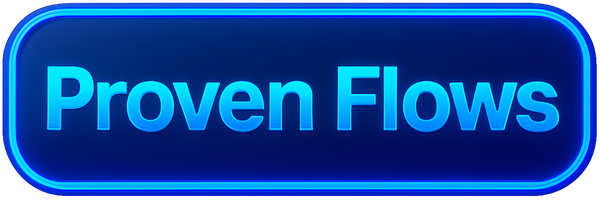How I onboard my new email subscribers in Kit (formerly ConvertKit)
In my business, I have several entry points through which email subscribers can arrive on my list – most commonly via a ‘lead magnet’.
If you’re unfamiliar with the term ‘lead magnet’, essentially, it’s something of value you can give your would-be subscribers as an incentive to join your email list in exchange for their name and email address – e.g. “The Email Marketer’s Starter Guide” downloadable PDF document is one of mine.
Each entry point has its associated assets, including the ‘thing’ they asked for (e.g. PDF, mini-course, video series, etc.) and an accompanying email sequence.
Step #1: I provide the ‘thing’ they asked for and thank them.
The first thing a subscriber gets from me (when I say “me”, I am, of course, talking about ‘Kit’, the email marketing platform I use) is the thing they asked for – e.g. the free guide.
In that email, I’ll say something like the example below where a subscriber has requested one of my freebies (a desktop tour of Kit);
In this email, I’m not trying to sell them something and I’m not confusing the initial engagement with any unnecessary complications – I just want them to get the thing they requested, i.e. the desktop tour.
Step #2: I try to capture zero-party data.
Once I’ve given them what they asked for, and normally after a day or two, I’ll then ask a question, the answer to which will help me drip-feed the most relevant content in my future emails to them.
Below is an example of one such question, posed using Kit’s in-mail feature, the ‘poll’ element.
Whichever response the subscriber provides will dictate the content they get in future emails. Any subscriber who doesn’t choose an option will eventually drop into a generic email sequence focused on helping them with email marketing in general and with ‘Kit’ (formerly ConvertKit) specifically.
Step #3: I get back to the job at hand.
Having collected data about their main challenge, I then revert to the problem of the moment, i.e. the one they showed up with.
Over the next few days (and sometimes longer, depending on what the lead magnet is), I send them emails to support and complement the ‘thing’ I shared via the lead magnet.
Continuing with the starter guide example, I then drip-feed a further 5 emails over the next week, each diving a bit deeper into various sub-topics of email marketing.
By the time this sequence ends, the subscriber probably knows more about the subject than most of their sector peers and a great foundation for moving on to the next level of learning.
Step #4: I set the scene and their expectations
Once I’ve given the subscriber what they originally came for, i.e. the lead magnet, I then send an email to frame who I am, what I do for others, and what they can expect as a subscriber to my list.
This isn’t a long or drawn-out sequence, just a brief update to kick off what I hope will become a long-standing relationship.
Again, I’m not selling anything using tough sales techniques; I’m merely letting them know that they’re in the right place and that I’ll be sharing more helpful content with them in the coming weeks and months.
Step #5: It’s time to use the zero-party data I collected
I then move the subscriber into the most relevant email sequence based on their response to whichever question I asked them (back in step #2 above).
This is easily achieved using Kit’s visual automations, with a ‘conditional’ statement that filters them into the appropriate sequence.
As you can see, on the right-hand side of this flow diagram, any subscriber who chooses not to respond to my zero-part data collection request (in other words, they didn’t answer the question I asked them) will receive a more generic email sequence.
Step #6: Finally, I move the subscriber into my ‘live’ content
Once the new subscriber has been through the initial email sequences, I automatically place them into the segment to receive my ‘live’ content like my weekly newsletter, ‘The Thursday Bulletin‘.
Over time, I continue to ask questions to help me better segment my subscribers, meaning they get an optimised experience on my email list – something I’m always striving to improve.
I know it can be burdensome sometimes, taking time to respond to questions, but it’s the only way of collecting accurate subscriber data (IMHO).
⚡️ Summary
So, there you have it – my onboarding flow for new subscribers. There are a million ways to configure your email marketing system, but hopefully, by sharing mine, you’ll get some ideas about how to design yours.
